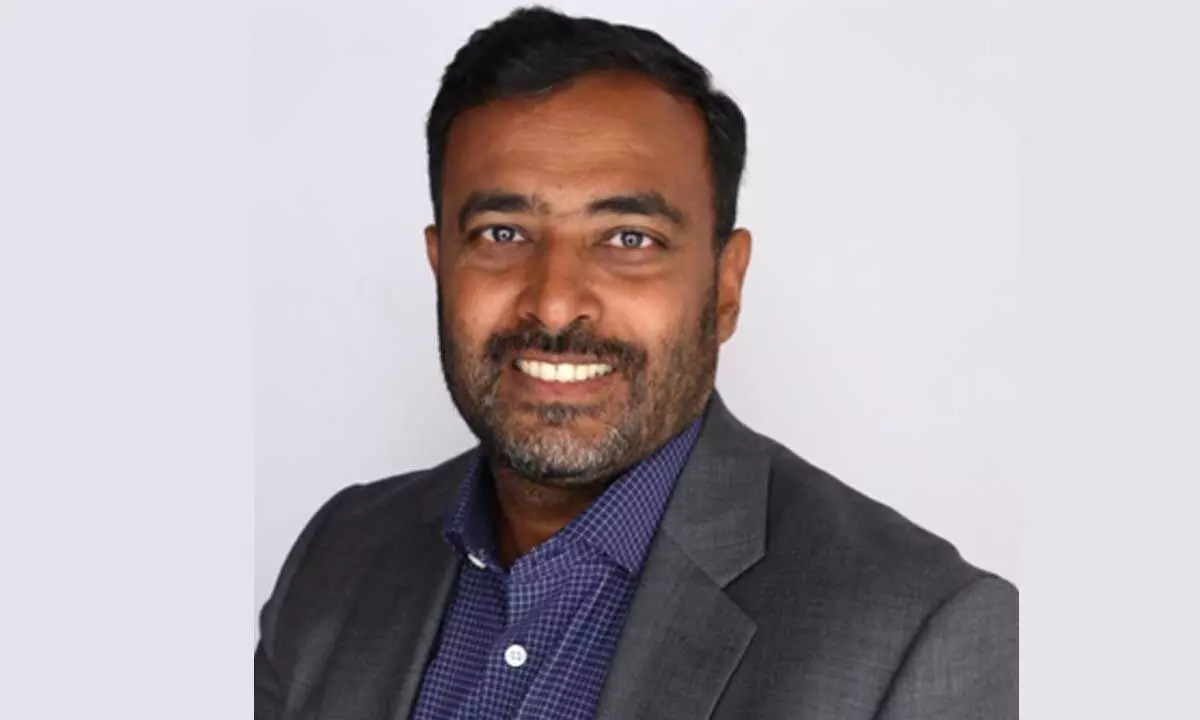Live
- 13 criminals from two gangs arrested in Jharkhand's Ramgarh for extortion
- Union Minister Bandi Sanjay Visits Injured Boy Sritej at KIMS Hospital
- Construction of over 1,000 bridges underway in Assam: CM Sarma
- Telangana IAS Officers wives association meets president Droupadi Murmu
- Nara Devaansh Sets World Record with Checkmate Marathon
- India set to become developed nation by 2047: Haryana CM
- Allu Arjun’s house attacked by protesters demanding compensation for the stampede victim
- Several Gulf countries impose visa ban on Pakistanis over their involvement in crime, fraud and begging
- Public outrage in Jharkhand's Giridih over murder, police station gheraoed
- Santosh Trophy: Meghalaya edge Goa 1-0 to secure QF berth
Just In
Prakash Subramani Revolutionises Hi-Tech Manufacturing


Prakash Subramani, a distinguished Solution Architect, revolutionised hi-tech manufacturing by developing an innovative SAP Variant Configuration solution. His groundbreaking work enabled seamless customisation of complex machinery while maintaining rigorous quality standards
Prakash Subramani’s remarkable journey in revolutionising hi-tech manufacturing through SAP Variant Configuration (VC) is a testament to his vision and expertise. As a Solution Architect at the world’s largest semiconductor equipment supplier, Prakash led the development of an innovative solution that redefined how complex machinery is configured and produced. His project has not only streamlined the customisation process but has also set new standards for manufacturing efficiency and quality assurance.
Reflecting on the inception of the project, Prakash shared, “The growing complexity of customer demands was clear. Traditional configuration approaches just weren’t capable of managing the intricate requirements of hi-tech machinery manufacturing. That’s when I realised we needed a more flexible yet robust framework to bridge the gap between customer specifications and manufacturability.”
The heart of Prakash's solution lies in its sophisticated use of SAP Variant Configuration, combined with an innovative Excel-based Product Option Analyzer (POA) tool. This tool, designed under his guidance, simplifies the process of managing thousands of configuration rules while ensuring accuracy and usability for sales teams. “The POA tool was a game-changer,” Prakash explained. “It allowed sales representatives in the field to configure highly customised machinery with ease, while ensuring the system’s complexity was never a burden.”
Prakash emphasised that what set his solution apart was its ability to capture and validate complex product specifications, ensuring they aligned with engineering requirements. “This was critical,” he said. “We couldn’t afford any misalignment between the sales configurations and the actual engineering constraints. The solution had to be as flexible as the customer demands but just as rigid when it came to manufacturability.”
The project’s impact extended far beyond improving configuration accuracy. “What we built wasn’t just a tool; it was a whole framework for custom manufacturing,” Prakash noted. “From the initial customer requirement to production-ready specifications, the transition was seamless. The system allowed for rigorous rule validation, integrated engineering review workflows, and advanced testing methodologies.”
One of the most innovative aspects of Prakash’s work was his ability to integrate engineering review workflows into the configuration process, ensuring that every customisation was vetted before reaching the manufacturing floor. “This meant that every configuration underwent thorough testing and validation,” he said. “Quality assurance became not just a post-production task, but an integral part of the manufacturing process from the very beginning.”
The solution’s technical sophistication was also a major factor in its success. “We were processing incredibly complex configuration rules across various product lines, ensuring that each rule was applied correctly without compromising the integrity of the data,” Prakash explained. “The system had to balance flexibility with control, and SAP VC allowed us to do that with remarkable precision.”
Prakash’s approach to knowledge transfer and quality assurance further contributed to the project's success. “We set up comprehensive testing protocols that ensured the solution was reliable in production,” he said. “It was about shifting the focus from quantity to quality. By doing so, we improved the overall customer experience and ensured long-term success.”
Looking forward, Prakash sees his work as a foundation for future advancements in manufacturing. “This system is designed to evolve with increasing product complexity,” he said. “As customer demands grow, the architecture is adaptable and scalable, setting the stage for future innovations.”
Prakash’s innovative work has not only set new benchmarks for configuration management but also paved the way for future transformations in hi-tech manufacturing. His success is a reminder of how innovative architecture can drive meaningful improvements in both operational efficiency and product quality. As industries continue to face growing demands for customisation, Prakash’s work serves as a blueprint for others looking to integrate customer requirements with manufacturing constraints while maintaining the highest standards of quality and reliability.

© 2024 Hyderabad Media House Limited/The Hans India. All rights reserved. Powered by hocalwire.com






